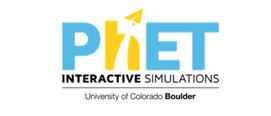Electricity and electronics - circuits
Students should be familiar with Ohm’s Law and the basic consequences of Kirchoff’s laws from GCSE. They are unlikely to have covered capacitors, but will have seen the basic characteristics of semiconductor devices.
The collection consists of videos giving background videos for for Ohm’s Law, capacitors and semiconductors as well as circuit simulations from PhET to use alongside worksheets to allow students to take measurements. There are also some relevant IOP resources from the Teaching Advanced Physics to help teachers with background as well as further teaching ideas.
Resources cover the specification points:
-
using mathematical methods to calculate values in electronic circuits, including:
-
current and voltage, using Ohm’s law
-
resistance and capacitance, where components are in series and parallel
-
electrical power
-
-
the junction characteristics of semiconductor devices such as diodes and transistors
- ALL
- Teacher guidance
- Textbook
- Video
- Demonstration
- Article
- Interactive resource
- Activity sheet
- External link
Teacher guidance
An Introduction to Circuit Symbols
Students should know most of the circuit symbols from GCSE, but this is a useful exercise to reinforce the symbols or to introduce the topic.
The resources include teachers notes and cards with the symbols as well as worksheets which are found in the teachers notes document. Although the card sort and other activities in the teachers notes might be useful for younger classes, the cards are more suited for revision. Worksheet 2 is not necessary for this level. However students should complete Worksheets 1 and 3 which have the correct descriptions completed.
Episode 101: Introduction to Circuits
Another useful introduction to building circuits from the IOP designed for Post 16 students. There are practical ideas, as well as the introduction to how current is affected by voltage and resistance.
The activities are especially useful to ensure students' understanding of current as the rate of flow of charge. Activities allow students to demonstrate their basic knowledge of circuits and introduces them to using multimetres. There are also good example questions to adapt into introductory lessons.
Episode 114: Components in Series and Parallel
This set of practicals and questions from the IOP is more readily adaptable into lessons. Circuits are similar to the ones in the previous resource however the notes are more useful for the teacher to use in their lesson planning.
In particular it explains the derivations of the formula for calculating resistance in series and parallel and contains two experiments worth doing to show the relationship of components in series and parallel.
Questions and solutions are also provided.
Episode 117: Kirchhoff’s Laws *suitable for home teaching*
This set of resources from the IOP introduces Kirchoff's laws and links them to the conservation of energy and charge. There are example questions with solutions and simple circuits that can be built in the lab or on the Circuit Construction Kit to verify the circuit laws.
Episode 127: Capacitors in Series and Parallel
This set of resources from the IOP can be used to teach the calculations for capacitors in series and parallel.
The derivation of the rules for capacitors in series and parallel is provided along with questions for students to complete.
If possible it would be good to make measurements with a capacitance meter, but if not possible, then the circuit construction kit might be used to demonstrate the rules to the students as well.
Textbook
Electronics Post-16
A 140 page book that contains some ideas for students to make using the principles they learn during the course. The main aspects of the book cover logic and building electronic circuits for display. Some of the ideas in the book may help with some of the project based work the students may be asked to do as part of the course.
Pages 72 to 86 cover the investigation of potential divider and using LDR as a sensor. This would be a good task for student to do to show their compentency in the application of Ohms, and Kirchoff's Laws.
Video
Bin-bag capacitor
A great video explaining how to introduce capacitors, including the construction of the capacitor, to your students.
The demonstrator goes through all the safety aspects of this particular demonstration, and highlights teaching points as he goes.
This video should not simply be shown to the students, rather it is an instruction video for teachers to allow them to do this impressive introduction to capacitors.
Demonstration
Episode 108: Resistance
This set of activities from the Institute of Physics contain some experiments for students to undertake when investigating resistance.
The most useful practical is the investigation characteristics of a constantan metal wire as this will introduce students to the relationship defined as "Ohm's Law" R = V/I. Students should be taught the definition of Ohm's Law as described on page 2.
Further experiments go on to show how increasing resistance decreases current. A filament lamp is used in the practical. This is useful because it allows a discussion leading to deeper understanding as to why resistance increases as temperature increases.
There are also sets of questions (with solutions) for students to complete.
Article
Essential Ideas in Electronics: Current
The first of a set of articles from Electronics Education which are a useful background for students. They are good notes for students to use. This one introduces current.
This sheet could be used as a comprehension exercise for students or a supplementary notes. The basics of current as the flow of charge is described and there is a good description of conventional current vs electron flow and how current is measured.
Essential Ideas in Electronics: Voltage
The second of a set of articles from Electronics Education - useful background for students. This one introduces voltage in two parts. The first explaining how electricity is used in different electronic sensing, and logic circuits. This is useful to help students understand why circuits form an important aspect of engineering.
The second worksheet explains what electric potential is and how it is measured. Again this resource is an excellent set of notes that students can use to supplement their understanding from lessons.
Essential Ideas in Electronics: Resistance
The third of a set of articles from Electronics Education - useful background for students. This one explains resistance.
It covers the concept of resisivity, including the formula, as well as values for common metals and insulators. Resistance is described in terms of conductance, and there is also a useful overview of the 4 band code for resistance values.
Again, this article is a useful set of notes to complement the teaching of resistance (see the next resource).
Interactive resource
Ohm's Law
A simple simulation to introduce Ohm's Law that visually represents the different factors of the formula and how they affect each other.
It is useful to demonstrate Ohm's law graphically, and this simulation does an excellent job of showing the relationship between V, I and R on the screen. This is best used by the teacher to explain the relationship, either before or after the experiment with a filament lamp, to help students understand how the different factors affect each other.
Activity sheet
Episode 111: Semiconductor Devices
A set of resources from the IOP that will support teaching of semiconductor characteristics.
By using an ohmmeter students explore the resistance characteristics of an LDR. They should be able to put this information into context when considering what would happen to the current as the light increased or decreased.
There are some ideas for a circus of activities but no detail is provided on how to set these up.
Demonstration of applications of semiconducting devices is very useful, there is a study project detailed in the electronics book resource below that allows students to investigate this further.
External link
Teach Engineering Ohm's Law worksheet
This is a worksheet from www.teachengineering.org that covers circuit basics, Ohm's Law, Kirchoff's Laws and practice calculations.
Teachers should review this worksheet thoroughly to ensure they know what it is expecting. For example the experiment on page 3 is demonstrating to students that the expected voltage from a battery is greater than the measured voltage. It does not explain why, but gives a method of calculating percentage difference. This is a useful calculation, but the teacher will need to explain to the students.
The resistor and lamp symbols used are not the IEC standard symbols that the students will be used to seeing, however this is not necessarily a disadvantage. It could be used to provide discussion about the need for standard symbols and methods.
The worksheet on page 7 is useful for providing students with the opportunity to practice rearranging V=I R to calculate the appropriate quantity from measurements.
The practicals cover series and practical circuits and could form part of a set of practicals for students to follow, so long as the teacher and students are able to adapt to the American terminology and symbols.
PhET Circuit Construction Kit
This simulator allows students to build and make measurements of circuits very quickly.
There are various documents explaining how to use this simulator, but the best thing to do is for the teacher to download it (it requires Java to be installed to run) and experiment themselves. There are different versions of the kit, but they all contain measurement tools such as ammeters and voltmeters.
The kit can be used in a number of ways. Students can build and make measurements on their own circuits, or the teacher can design circuits beforehand and distribute the file for students to load into their kit to take measurements.
Finally, of course, the teacher may simply want to use this to demonstrate different circuits on the whiteboard rather than let students use it themselves. There is the tendency for students to build very complex circuits, but once they've got that out of the way, it is a very powerful tool.
PhET Circuits Lab
This is an example of how the PhET Circuit Construction kit can be used to help students investigate series and parallel circuits. While a physical practical session is invaluable for getting to grips with building circuits, the advantage of this method is the speed of building circuits in the kit allows measurements to be made quickly, which in turn allows the focus to be on measurements and calculations instead of manipulating physical circuit components.
How Does a Transistor Work?
Derek Mueller uses his talents for scientific explanation by video to introduce the transistor as well as explain the concepts of n- and p-type semiconductor and doping.
This is a good overview of semiconductors and how they are used to build transistors and diodes.
It is best used after introducing the characteristics of a diode so students have an idea that current is stopped before explaining how.
PHET Semiconductors Simulator
Explore how doping allows the creation of n- and p- type transistors and show how they act as diodes.
This is a good demonstration to use with students to help show how semiconductors change their behaviour depending on the direction of current flow and the chemical make up of the semi conductor. It shows how electrons move to the conduction band of transistor or diode. It complements the video above.






